Summer is one time during the year when salads truly do sound refreshing and inviting. You may be a lover of a good salad just about any time of year, but even those that are less inclined can be tempted by a good salad in the hotter months. The trick is to build a healthy entree salad that actually satisfies and doesn’t leave you searching for a snack in an hour or two (or wishing there was more right away).
As it turns out, there are a couple of simple rules and steps you can follow to make sure your summer (or any time) entree salads come out tasty, healthy, and satiating.
I’ll go over my little plan for building a healthy entree salad that satisfies, add in a few of my favorite ingredients you may not have thought about along the way, and finish with a few examples of full salad recipes you might want to try.
The Steps to Build a Healthy Entree Salad
When you’re building an entree salad, you need to make sure there is enough substance to the contents to constitute an actual meal. One way to do that is to pay attention to the three macronutrients you should find in just about any meal: Carbohydrates, Proteins, and Fats.
Now, I know some of you might have macronutrient goals that keep you lower in carbohydrates (keto, etc), but a good starting place for most people is a 40/30/30 ratio (carb/pro/fat). If you follow the general steps below, you should get close. If you want to make sure, just plug your salad ingredients into something like the myfitnesspal app and it will tell you. You can see how to do that HERE.
Feel free to lower the carb percentage if you’re doing keto but that’s not something that we promote for everyone here on this site.
Here are my steps to build a healthy entree salad:
Step 1 - A Bed of Greens
Of course we start with a bed of greens for just about any salad. Stick with colorful greens that are rich in nutrients. You may have heard that iceberg lettuce isn’t very nutritious and that’s true. It just doesn’t have a lot of nutrients for the volume. Choose greens like spinach, kale, spring mix, or romaine.
🥗 AMOUNT: 2-3 cups per salad
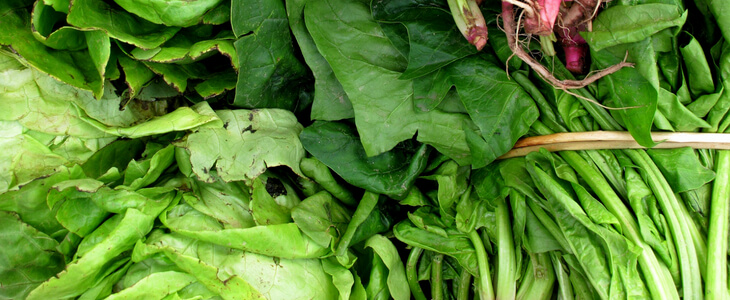
Step 2 - Veggie and Fruit Toppings
Next, pick your chopped veggie and fruit toppings. Most of this should be veggies with a little fruit if you’re making a sweeter salad. This is where you can add a lot of crunch and texture to the salad while also adding in some healthy carbohydrates.
👉Peppers (bell peppers, pepperoncini, jalapeno, etc)
👉Onions (red, yellow, white, sweet, green, etc)
👉Tomatoes
👉Cucumbers
👉Carrots
👉Broccoli
👉Berries
👉Apples
👉Citrus Fruits
Tips and Tricks:
- Stick with low glycemic fruits to get some carbs without the sugar spike (berries are awesome for this)
- Julienne your veggie toppings (or buy them already cut) to get amazing texture
- The more colorful the better!
🥗 AMOUNT: ~3/4 cup per salad
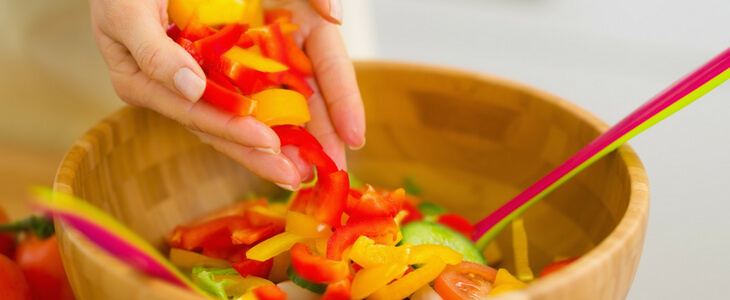
Step 3 - Fermented Veggies
This step is optional but highly recommended. Consider adding a healthy fermented veggie to your salad for gut health. You might be surprised just how good sauerkraut can be on a salad (ok…sheesh…I said it was optional). Kimchi, pickles, or other fermented veggies really can be great additions to a salad. Also, miso is a great fermented food that can be easily utilized in dressing (see the dressing step).
🥗 AMOUNT: 1-2 oz. per salad
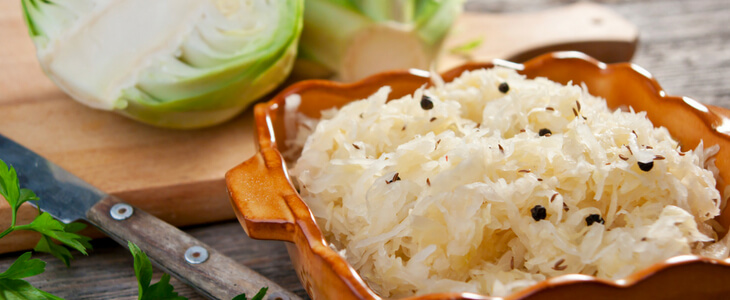
Step 4 - Protein
Now that you have a good base of vegetables and maybe some fermented foods for gut health, it’s time to add a healthy protein. This will significantly increase the heartiness of this meal. The protein you pick will depend on your preference and what goes with the other toppings you choose, but here are some ideas.
👉Unprocessed meats such as steak, chicken, and wild-caught fish
👉Cheeses such as cheddar, jack, feta, goat cheese, and more
👉Hard-boiled eggs
👉Legumes (beans) and quinoa for non-animal sources
Tips and Tricks:
- You’ll get plenty of fat from dressings and additions like avocado so it may be best to go with leaner proteins here (although that’s not required)
- Limit your cheese intake especially if you are sensitive to dairy at all
- Beans will also provide more carbohydrates, so take that into account
🥗 AMOUNT: ~3 oz. of meat, 1 oz. or less of cheese, 1/2 cup beans or other plant-based protein
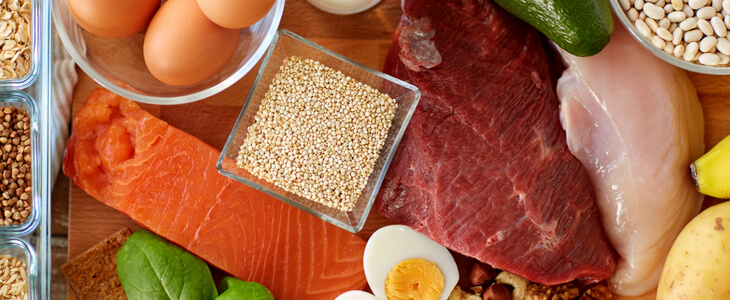
Step 5 - Healthy Starch
This step is also optional but recommended unless you are trying to limit carbs. The key here is to pick starches that also provide the most nutrients. Things like white bread (or even whole grain breads) are not as nutrient dense as colorful root vegetables, just as an example. Here are some ideas:
👉Roasted root vegetables – sweet potatoes/yams, various squash varieties, beets, turnips, rutabaga, carrots, onions. Roasted roots are amazing on salads but you don’t find them that often. My favorites are red and golden beets roasted in olive oil at 400F until soft.
👉Whole grains – Farro, barley, wild rice, brown rice
👉Whole grain croutons such as these air fryer croutons
🥗 AMOUNT: ~1/2 cup per salad
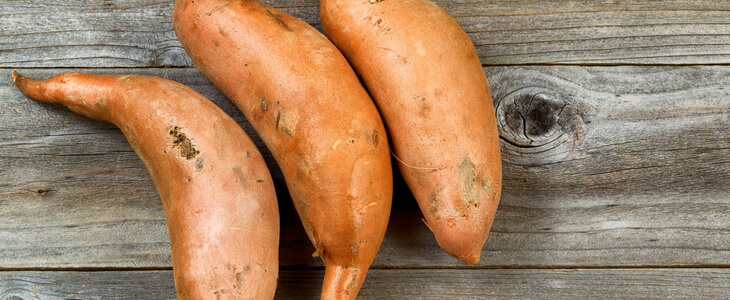
Step 6 - Healthy Fat
Adding a healthy fat to your salad gives it a huge boost toward the entree level. Just make sure you take a look at what protein you chose in step 4 and what dressing you choose in the final step when you are considering adding healthy fats here. For example, if you choose salmon for your protein and use a dressing with lots of healthy fats, you may not need to add another healthy fat here. If you do decide to add one, here are some great options:
👉Avocado
👉Chopped nuts or seeds
🥗 AMOUNT: ~1/4-1/2 of an avocado, ~2 Tbsp of toasted or raw nuts or seeds

Step 7 - Healthy Dressing
You actually don’t always need a dressing on a good salad, but most of the time you’ll choose to add a dressing. Unfortunately, the salad dressing aisle in the grocery store is one of the most frustrating of all. Every bottle seems to have added sugar, hydrogenated oils, or other things you can’t even pronounce. So, what do you do? Here are a few options:
👉Use fresh salsa
👉Olive oil and vinegar
👉Any of these healthy dressing recipes
NOTE: My personal favorite is the miso-ginger dressing. It gets your fermented step taken care of (though it goes well with sauerkraut too…not joking) AND it has healthy fat.
🥗 AMOUNT: ~2 Tbsp per salad
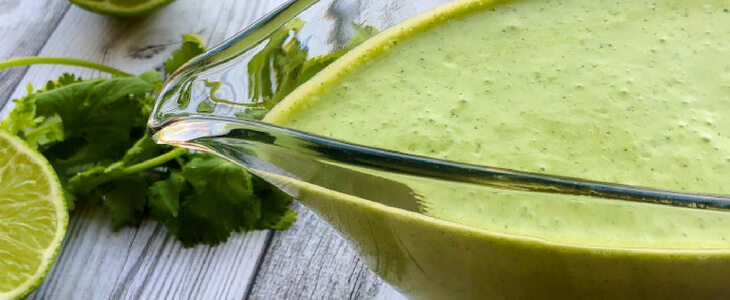
EXAMPLE ENTREE SALAD RECIPES
Here are some of my favorite entree salad recipes from our site. They don’t all meet the 40/30/30 requirements and they don’t all have ALL of the steps listed above, but they have most of the steps and provide everything needed for a good healthy entree salad.
Summary of How to Build a Healthy Entree Salad
👉 Aim for roughly a 40/30/30 mix of carbs/proteins/fats
👉 Start with a bed of greens with deep, rich color (not iceberg lettuce, preferably)
👉 Add crunchy veggies and low glycemic fruits such as peppers, onions, cucumbers, and berries
👉 Add fermented veggies for gut health
👉 Add a healthy protein
👉 Add a healthy and colorful starchy vegetable or grain
👉 Add a healthy fat (if needed or desired)
👉 Pick a healthy dressing
That’s it!
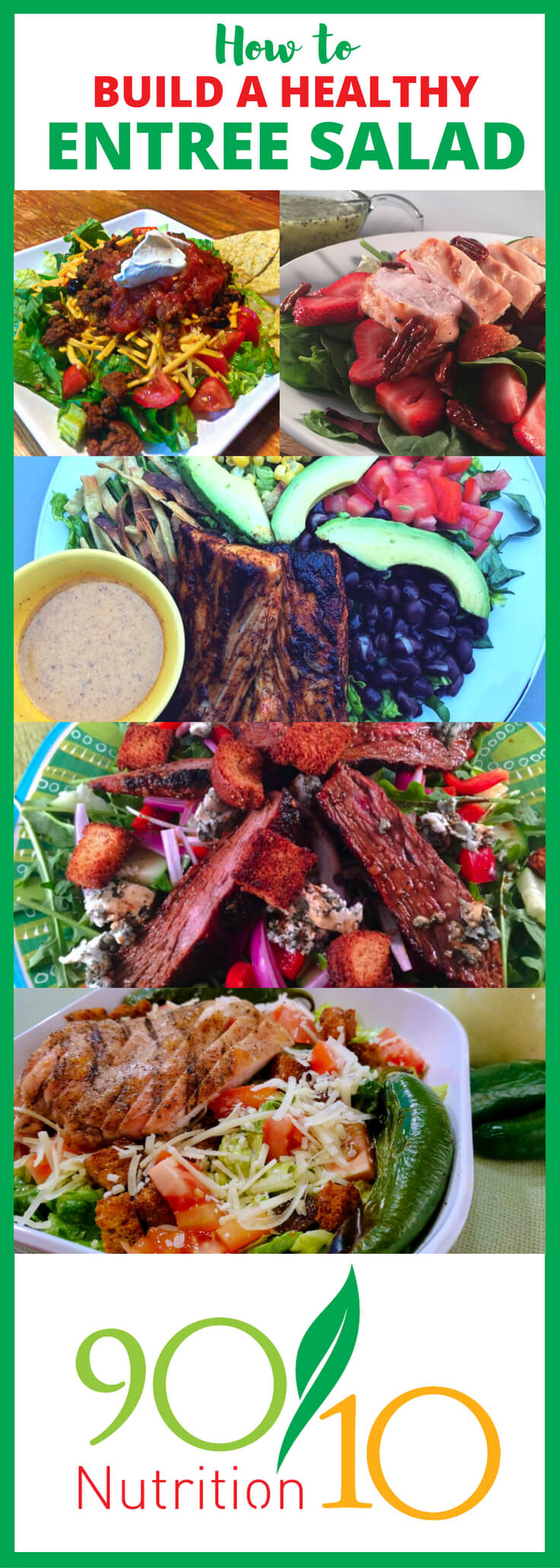
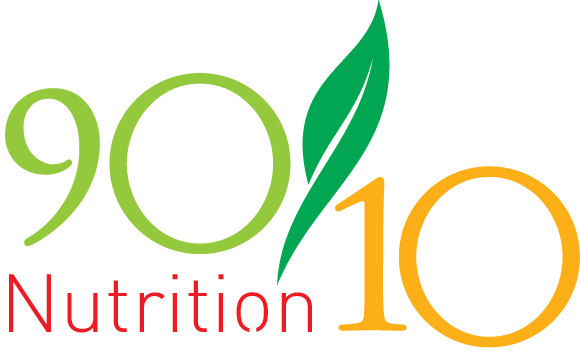
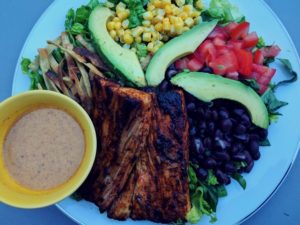
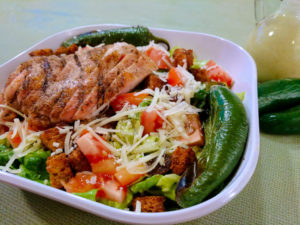
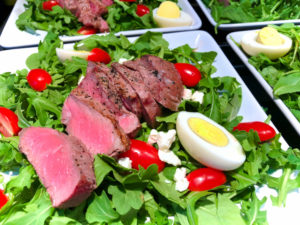
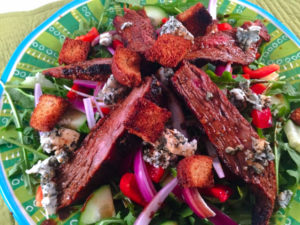
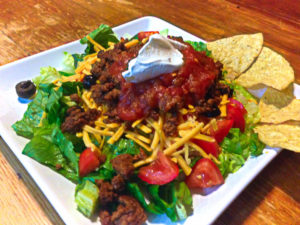
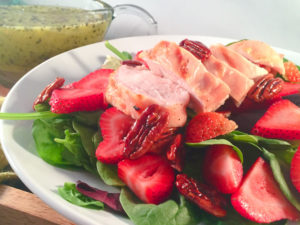


Comments (2)
Good tips.
Never thought of trying sauerkraut on a salad; just might have to try some day.
Love this, salad is my go to meal in the summer